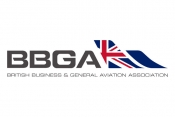A successful year for London Oxford Airport as business aviation grows by 12.2%.
Monday 19th December 2011
Ranks number five amongst key business aviation airports in the UK:
London Oxford Airport continued to see its business aviation traffic grow throughout 2011. The airport now supports around 6,000 business aircraft movements a year (15% of Oxford's overall aviation activity). As 2011 closes, growth is up 12.2% compared with last year, according to independent analysis by EuroControl. This increase ranks Oxford fifth in the UK for business aviation activity at civil airports, ahead of London Stansted Airport.
"This continued growth in our business aviation traffic is great news," said James Dillon-Godfray, Business Development Director at London Oxford Airport. "It proves the attraction of our airport to business and VIP travellers and justifies the on-going investment by the owners and the outstanding commitment of the London Oxford Airport and oxfordjet FBO team."
Some of 2011's highlights include:
Latest Generation Radar - In a significant step forward with infrastructure development, the decision was taken to install the latest generation radar system at the airport. The primary and secondary (Mode-S, MSSR) surveillance radar system, supplied by Thales with project management by NATS, is undergoing testing now and will be fully operational ahead of the 2012 Olympic Games. It is amongst the most modern and sophisticated radar systems available today and will enable more efficient transits through local airspace. Oxford can now monitor air traffic half way up the county, beyond London out to the Thames Estuary, south as far as the English Channel and to the west over Wales.
Major Runway, Apron and Ramp Developments:
At the beginning of 2011 the runway's licensed lengths were increased by up to 21%. Additionally the runway strength was reassessed at a PCN of 38 and is now suitable for use by a number of heavier regional jets including the Embraer E-Jet series and the A318/319 family.
The airport is now routinely visited by larger jet types, including the Embraer EMB-190 and Avro RJ with seating capacity of 100 plus. London Oxford Airport is also prepared for the next generation of regional jets including the Sukhoi Superjet and the Bombardier C-Series, meaning 110 passengers will be able to fly more than 2,670 nm out of Oxford - covering destinations as far as Sharm El Sheikh.
The larger 135-seat CS300 will be able to cover most of Europe from Oxford. The new runway length enables longer range private jets such as the Global and G550 family to undertake transatlantic flights on a commercial basis.
At the start of the year work was completed on 17,800m2 (4.4 acres - equivalent to three football pitches) of new high strength apron while the airport has also resurfaced 5,000m2 of established surfaces, representing a £2.2m project providing a considerable enhancement in ramp capacity and infrastructure. This doubled the parking capacity at the airport, bringing it to a total of 35,000m² (8.65 acres).
New Buildings:
Work started on the first new office blocks to be constructed at the airport for 30 years. Two, three storey, 12,500 sq.ft. (1200m2) buildings will be constructed at the entrance to the airport. A new four lane entrance and reception building should be completed during 2012 at a cost of £8 million.
Improved facilities for tenants:
Already host to more than 20 companies employing over 800 people at the airport, this will enable further expansion whilst also attracting new businesses. This follows on from an 80% increase in hangarage capacity over five years with close to a quarter of a million square feet now available (23,000m2). In 2012, London Oxford Airport will explore the opportunity to expand its 150 bedroom accommodation complex, potentially with a 300 bedroom facility.
London Oxford Airport will see the start of the next major improvement project in 2012 with development to the north of the main site where a series of new hangars and a fire station are to be built, facilitated by the relocation of the current taxiway. The new hangars will be sized to accept the next generation of regional airliners and the largest business jet types.
Tenant Company Growth - companies including Hangar 8 plc continued to expand with a significant increase in managed jets, now up to 32, having started with 19 back at the time of their flotation on the London AIM market. Hangar 8 plc's fleet now includes aircraft from the CJ2 through to the Embraer Lineage, the longest charterable private jet on the UK register and has the largest fleet of non-fractional owned Hawkers in Europe. Eurocopter UK Ltd, as part of Oxfordshire's high-tech economy, continued to expand through innovation.
On top of the expansion of services to more than 60 helicopters across the British Isles, the company further expanded its design, customisation and retrofit of civil and military helicopter platforms, providing indispensable hi-tech solutions for the country's police, rescue, emergency medical services and energy operators as well as the armed forces.
MRO business EBAS, a Bombardier Challenger and Global Express specialist, saw significant growth in visiting and based resident support ending the year with a full hangar of Challengers having gained their EASA-Part 145 approval last year. London Oxford Airport now hosts several resident Global Express and Challenger aircraft.
AirMed, the country's leading medevac and repatriation specialist, saw a massive increase in the popularity of its two Learjets, the only dedicated medevac jets on the UK register. AirMed introduced a new neo-natal specialist capability which is now in demand around the globe.
FlairJet, the Embraer Phenom specialist, saw several new aircraft arrive through the year. It became the debut customer of the Embraer 300 in Europe and further developed its training, ferry and acceptance services for other Phenom customers.
Embraer also established a satellite support operation at Oxford in late 2011 with the airport now hosting every one of the Embraer family of business aircraft.
Oasis Flight doubled its fleet size with the addition of the venerable King Air models and now undertakes significant organ transplant missions benefiting from Oxford's 24-hour permitted access for medevac and emergency operations. Finishing the year, new charter operator Fly Vectra is now established at Oxford with Citation Excels.
State of the Art Fire Tender:
Oxford took delivery of the latest generation fire tender in August, the first of its kind in the UK. Supplied by ITURRI Group of Spain, the £500,000 investment sees the airport utilize the very latest technologies available for both its rescue and fire services (RFF) and ATC systems now in place.
Commercial Flights:
2011 saw the third successful season of direct flights between Oxford and Jersey, with year-on-year passenger growth. The airport concluded the year with its first seasonal Dublin charter with a link to New York over the Christmas season. (See photo attached) Opportunities continue to be explored for regular year-round, daily scheduled services with a number of airlines.
New Rail Links and Improved Access:
2012 will see a new local rail station established at Kidlington, just five minutes away, on a new track connecting Oxford direct with London's Marylebone for the first time, meaning that the airport terminal will be accessible from London within an hour via public transport. In addition, as part of the National Infrastructure Programme announced by the Chancellor this December, a new rail line linking Oxford with Milton Keynes and Bedford will be established in the next few years, opening up a whole new catchment area for the airport with Milton Keynes, destined to be the UK's eighth largest city, within just 35 minutes from the new local rail station.
An Olympic advantage:
London Oxford Airport is gearing up for the 2012 London Olympics, which is anticipated to boost business aviation traffic potentially threefold. With Oxford being situated outside the 2012 London 'Restricted Zone', there will be no flight plan constraints.
The airport is also outside the congested London Terminal Manoeuvring Area (LTMA) which is usually the busiest airspace in Europe and will be even busier during the Olympics. Oxford's opening hours, 06:00-22:30, seven days a week, are notably longer than several other London alternative airports and the airport has the option of extending the opening hours to midnight during the peak Olympic period, if required.
London Oxford Airport also has lower costs than most other London regional airports and provides on-site service support for most common business aircraft types. The airport also has full-time, on-site Police/Special Branch support for assistance with VVIP, Head-of-State, close protection and all other security necessities. In addition, Thames Valley Police HQ is next to the airport, complete with an armoury.
"London Oxford Airport has many benefits over other London airports and with the 2012 Olympics fast approaching, we're ideally positioned to accommodate the inevitable increase in business aviation," said James Dillon-Godfray. "Being located to the north west of London, with access to the capital via the fastest UK motorway, the M40, with the least congestion of any London arterial route, is a notable advantage. The London Oxford Airport team is very excited about 2012 and the Olympics in particular - we anticipate a record breaking year."
About London-Oxford Airport: London Oxford Airport is wholly owned by the Reuben Brothers. Their investment activities include private equity, real estate ownership and development, which are predominantly based in the United Kingdom and Europe. Businesses include shopping centres, mixed use commercial real estate, data centres, race courses, public houses, hotels and other development projects.
Latest News

Friday 8th March 2024
Wally Epton, distinguished aviator, receives BBGA’s outstanding contribution to aviation award
Latest Tweets
Loading Tweets...
Resilient Aviation
Loading Tweets...







Get Social
Twitter Linked in Facebook Instagram